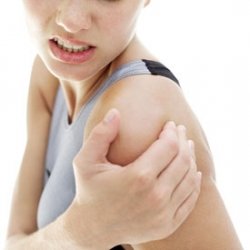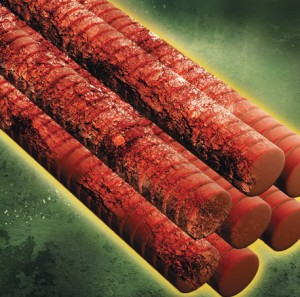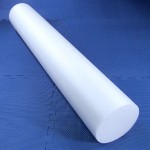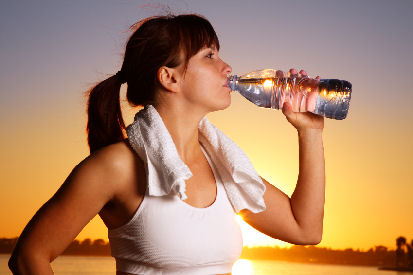Boot camp workouts provide a great number of side effects as benefits. Greater strength and endurance, more energy and self confidence, and better over all health are among them.
However, there is one particular side effect that is not quite so pleasant. And those that are new to boot camp style workouts are the one’s who experience it most severely. It’s called delayed onset muscle soreness or DOMS.
 DOMS is felt as a dull, aching pain in a particular muscle or muscle group. It is often accompanied with tenderness and stiffness. Typically, the pain is felt only when the muscle is being used or under pressure, not when it is at rest.
DOMS is felt as a dull, aching pain in a particular muscle or muscle group. It is often accompanied with tenderness and stiffness. Typically, the pain is felt only when the muscle is being used or under pressure, not when it is at rest.
DOMS is different from any muscle pain or discomfort that might happen during the workout. That burning sensation and muscle fatigue experienced during exercise is a different process.
What makes DOMS unique in experience is that the soreness does not appear until many hours after the workout. The soreness usually peaks in intensity about 24 to 48 hours post workout and slowly subsides over the course of a few days.
What Causes DOMS
There are a number of theories surrounding the specific mechanisms that cause DOMS however nothing conclusive has been determined. Most likely, DOMS may be due to a combination of connective and muscle tissue micro-trauma, inflammation, and enzyme efflux.
There is only one thing for sure and that is the less accustomed you are to a type of exercise, the worse the soreness will be. For the deconditioned, the soreness can be intimidating and those that are unfamiliar with DOMS often believe they might have injured themselves. This is not the case and no one is immune from DOMS.
The good news is that one of the best ways to prevent DOMS is through the “repeated bout effect.“ That means that your body adapts to repeated exposures to the same type of training, so that, in time, you will be less and less sore.
Ironically, some people have come to believe that DOMS is an indicator of the effectiveness of a workout. This is not the case as muscle growth and physiological improvements take place regardless of DOMS.
Recovery and Rejuvenation
Before we get into dealing with the pain let’s talk a minute about recovery. No matter the severity of the DOMS, if you are working out properly to burn fat and build muscle (muscles burn calories) you are breaking down muscle tissue. So, recovery depends on two things – proper rest and nutrition.
With rest and nutrition your body doesn’t just rebuild muscle tissue that has broken down. Your body will seek to adapt to the stress put upon it by making those muscle fibers stronger and more dense (think hard body :-)) so it can handle that stress again in the future. That is why nutrition is so important including taking a multi-vitamin like ProGrade VGF and using a post-workout shake like ProGrade Workout.
What About the Pain?
Many methods for the treatment of DOMS have been tested. Published reports state that advanced clinical methods such as cryotherapy, homeopathy, ultrasound, and electrical current have demonstrated no effect on muscle soreness. Also stretching, while it does have its purposes, does not alleviate DOMS.
These reports indicate nonsteroidal anti-inflammatory drugs (NSAIDs) such as aspirin, ibuprofen, and naproxen may help, depending on dosage and time of administration. Also, massage has shown varying results that may depend on when the massage was applied and the type of massage technique used.
Believe it or not, exercise is the most effective means of alleviating pain during DOMS. Exercise provides a pain-relieving effect. However, this effect is temporary.
This is what Works!
Published reports and clinical studies aside, in the field experience has always lead the way for what works and what doesn’t when it comes to fitness. At boot camp, the pre-warm up and the cool down both include a form of self-massage called self-myofacial release (SMR) that is conducted using a foam roller.
This deceptively simple device is used by elite and professional athletes alike for soft tissue preparation, and recovery and rejuvenation. The use of the foam roller is also assigned as homework for our campers.
Clinical studies have proven that massage can be effective. Out in the field, foam rolling and other forms of self-massage are demonstrating their effectiveness for helping to alleviate DOMS and speed the recovery process.
Stay Wet!
One other factor to consider that may help to minimize DOMS is hydration. Connective tissue has a poor blood supply and is easily subjected to dehydration. As the tissue dries out, it loses its strength and elasticity and becomes brittle. Any strain on these tissues can cause fraying and tearing.
Well-hydrated tissue is stronger and more elastic, and more able to absorb the strains of physical trauma without breaking. Therefore, proper hydration at all times needs to be maintained.
Say What?
So in the end, if you are sore after your first few boot camp sessions, it is to be expected. Matter of fact, the more sore you are, the more you need it. Remember, no harm has been done and your body is making the improvements it needs to keep getting better.
To help prevent muscle soreness, make sure you use the foam roller both before and after the workout. Also, make sure you are well hydrated at all times.
Also, don’t skip your next workout because you may be sore. Exercise provides an analgesic effect and I promise you, you’ll make it through just as countless others have.
Use a foam roller at home. Grab it right as you get out of bed to warm up, loosen up, and get blood circulating to those muscle tissues to speed recovery. It may not be comfortable, but it does work!
Finally, an NSAID pain reliever may provide some pain relief (this is not advice – always seek medical “advice” from a medical practitioner), and always, always remember to stay well hydrated!
See you at Camp!




{ 3 comments }
Hi Ed, I heard that DOMS is actually good for you, especially if you’re advanced practitioner because it tells you that you’ve worked those muscle parts that were neglected before and it can give you more gains if you feel sore day after the workout. Is that correct? Thanks.
From what I’ve read hypertrophy occurs only within the context of low inflammation levels. Inflammation is usually associated with micro-trauma that may be part of what is causing DOMS. So you’re not necessarily going to see gains in strength OR size because of DOMS. However, DOMS does provide feed back that your muscles have experienced something they weren’t accustomed to. In experienced practitioners that’s usually going to be related to load or volume. It’s not that the muscle groups were neccessarily neglected, just that they were unaccustomed to the load or volume placed upon them. So, while it’s unlikely any gains will occur within a day or two after the workout, once the initial adaptations have taken place, you may experience significant gains by staying at that particular phase of your workout periodizations.
Absolutely fantastic explanation and answer to my question Ed, thanks a lot!